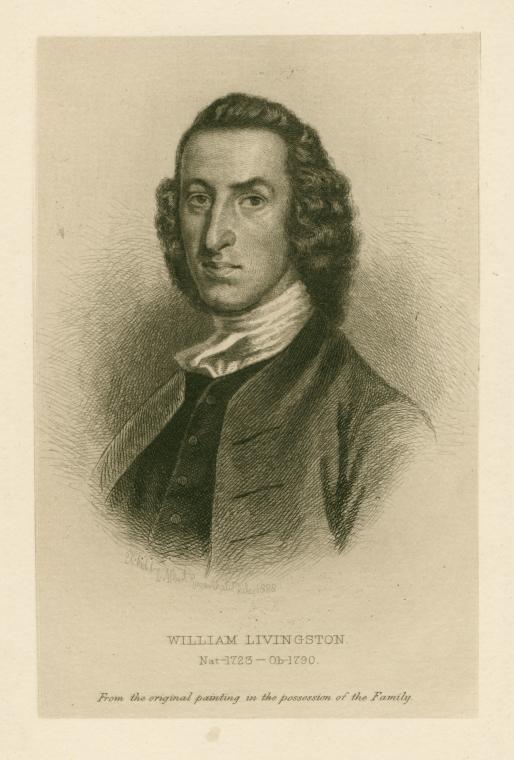Last updated on February 16, 2022
Livingston: A Governor, a College, and the Long Echoes of Slavery at Rutgers online program held Jan. 18, 2022: More info or view the video.
(Information on this page is condensed from text from Rutgers’ Scarlet & Black Digital Archive.)
 Livingston Campus was named after William Livingston, the first governor of the state of New Jersey after the American Revolution.
Livingston Campus was named after William Livingston, the first governor of the state of New Jersey after the American Revolution.
The Livingston family was connected with Rutgers from the college’s earliest days. William Livingston’s brothers Philip and Robert Livingston were two of the original founding trustees of the school.
The Livingston family’s wealth in the 18th century came largely from their roles as merchants and slave traders operating out of New York City. Founding trustee Philip Livingston traded slaves from Jamaica and Antigua and owned plantations in Jamaica. He also held black people in bondage in New York.
William Livingston, on the other hand, was torn between his family’s slave trading and his belief that slavery was incompatible with the young American nation’s ideals of freedom.
William Livingston called slavery “an indelible blot” upon humanity. As governor of New Jersey, he opposed the slave trade and hoped to pass a gradual abolition program after the Revolution. He won a ban on the Atlantic slave trade in New Jersey in 1786 (22 years before the Atlantic slave trade became illegal nationwide). But he was not able to achieve abolition during his tenure as governor, because slaveholders who opposed Livingston’s views held too much power in the New Jersey legislature.
William Livingston at one time enslaved at least two people, a woman named Bell and her son, Lambert, as noted on a plaque installed on the Livingston campus in 2021.
The plaque reads:
“Livingston Campus (site of former Livingston College) was named after William Livingston, the first governor of the state of New Jersey, whose family made a fortune trafficking human beings in the transatlantic slave trade. The campus opened in 1969 as an experimental, social-justice oriented campus at the site of Camp Kilmer, a World War II-era military camp. The Livingston family collectively enslaved hundreds of people and Williams’ brothers, Philip and Robert, two of Rutgers’ founding trustees, bought and sold hundreds more. When William Livingston moved to New Jersey, he enslaved at least two people, a woman named Bell and her son Lambert. Though he later advocated for gradual abolition, he continued to represent the legal interests of his slave-trading family’s wealth throughout his career. This marker honors Bell, Lambert, and the other women, men, and children enslaved and sold by the Livingston family.”
Additional information and resources:
Scarlet & Black Digital Archive: Livingston
Rutgers Confronts Ties to Slavery With New Historical Markers


